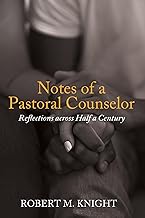When I claim to be defined as a “Christian humanist,” my “secular humanist” friends often look at me like I had just embarrassed myself by uttering, at best, an oxymoron, if not at worst, a malapropism.
“What does being a Christian have to do with being human?” the distancing, dismissive gesture of some would suggest. While I’m thinking, “What doesn’t it?”
God’s own “human-ness”–it’s the Christmas story. Or so declares the Prologue to the Gospel of John, that “the Word became flesh and dwelt among us, full of grace and truth.”
Christmas–it isn’t a story about a man becoming a god–it is, rather, a story of God becoming a person.
It’s not a “literal” story; it’s a “true” story. Which, not unlike my “Christian fundamentalist” friends, so many of my “secular humanist” friends seem not to comprehend. Yet another instance of the arrogance of so-called “modern, scientific thinking”: that for anything to be “true,” it has to be “literally true.”
For example, in the third chapter of the Gospel of Mark (in our Christian New Testament), there is a short pericope (verses 13-19a) in which Jesus calls his first disciples. Two of whom are brothers named James and John, who elsewhere in the Gospels are characterized by the impulsive, impetuous personality they seem to share; indeed, the kind of rash, reactive temperament hardly given to necessarily thinking before, at least speaking, if not acting.
And in that portion of Mark 3, Jesus nicknames these brothers “Boanerges,” meaning literally, “sons of thunder.” It’s an apt nickname. As “true” as it is, however, Jesus is, in this instance, hardly making a “literal” statement.
The same Gospel of Mark later includes (chapter 15) an account of Jesus’ crucifixion. And upon Jesus’ death, a Roman centurion is quoted as saying, “Truly, this man was the Son of God” (v. 39).
When one reads these two statements I’ve just cited in the Greek text, the grammatical construction of each is identical [except for the former “sons” (plural, uioi) being singular (“son,” uios) in the latter reference]. In other words, the character traits and qualities of James and John are described by Jesus as not unlike how one typically experiences “thunder” (threatening, unpleasant?). Just as the Christian witness declares that the most and best we know of who God is, we find, in optimally human ways, in Jesus.
Just because a statement isn’t “literal” doesn’t mean it isn’t “true.” In fact, there are some “truths” that defy the confining characteristics of whatever might be conceived “literally.” One of which (whom!), despite what some would claim, is surely God.
In the New Testament, only the Gospels of Matthew and Luke provide accounts of Jesus’ birth, each telling the story–however embellished, including the employing of classic literary (story-telling) characteristics–from a different perspective.
The oldest heresy in Christian history is called Docetism, a form of Gnosticism. The Docetic claim, which flourished in the late first century (and, in some circles, ever since), denied Jesus’ “humanity,” declaring that Jesus was merely “an angel in disguise.”
Written in the late first century, the birth narratives in Matthew and Luke were/are meant to counter the Docetic heresy: the “Christmas story” bearing witness to the “humanity of God” in the birth of a baby, Jesus. It’s called Incarnation.
Not unlike the Hebrew Bible–an anthology, the theme of which emerges, however disparate, looking back through the 13th century B.C.E. Exodus, that defining, liberating event in and out of which ancient Israel (literally, “people of God”) was formed–so is the Christian New Testament (of the Common Era) also written backwards. For however one interprets the resurrection of Jesus, it at least (and hardly “at least”) created “the Church,” the “believing community,” followers of Jesus whom Paul calls “the body of Christ,” our Lord’s “living, resurrected presence” in the world.
The Church thus bears its Christian witness looking back through Jesus’ resurrection. A story–a “true story,” however “literal” or otherwise–the telling of which (on the part of those first Christians, mostly Jews) begins in the New Testament, continuing as it does even today. It is, after all, as I write this blog, what I am doing. But a small gesture in a far greater and extended “witness” to Christian faith.
It is from this “faith perspective”–Jesus’ “living, resurrected presence” in the lives of his countless followers across the centuries–that the story of Jesus’ life and death, his “saying and doing,” his redemptive presence and purpose in the world is told.
And in these days, the focus of that “witness,” that “story”–it’s called Christmas. It is how I and countless others have been defined–as “Christian humanists.” Since, for folk like us, the most and best we know of what it means to be truly and fully “human”–God’s own “human-ness”–it has been revealed in Jesus: “the human face of God.”
According to Christian ethics, then, we fail (“sin,” fall short, “miss the mark,” hamartia), not when we are “human,” but when we are “other” or “less than human.” And ironically, more often than not, it is when we are trying, somehow, to be “more than human” that we end up, tragically, being so painfully less.


